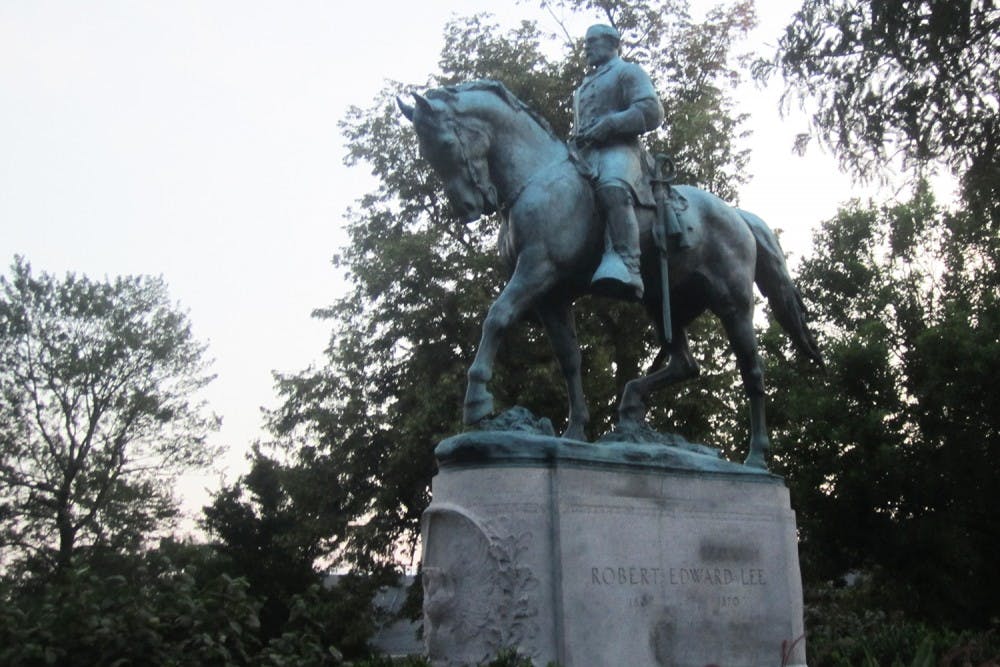The Blue Ribbon Commission on Race, Memorials and Public Spaces provided an interim update to the Charlottesville City Council earlier this week.
The update addressed some of the accomplishments the commission has made since its inception last spring, after statues of Confederate leaders Robert E. Lee in Lee Park and Stonewall Jackson in Jackson Park — both located downtown — came under fire.
In May, City Council tasked the commission “with the mission to provide council with options for telling the full story of Charlottesville’s history of race and for changing the city’s narrative through our public spaces.”
“City Council did not feel like it could make a decision without consulting widely and looking at all the options,” Vice Chair John Mason said in an interview with The Cavalier Daily. “The commission is charged with looking at the various options and also consulting widely with the Charlottesville community and with various experts in the field.”
Mason and Commission Chair Don Gathers updated City Council at its Sept. 19 meeting, noting that the commission has held community forums, visited historic sites around the Charlottesville area via a bus tour and attended a presentation by the city’s Historic Resources Committee.
The commission has divided itself into four subcommittees to cover all aspects needed to make recommendations about public spaces in Charlottesville. These committees are Public Engagement, Case Studies, Inventory of Historic Sites and Historical Context and Background.
The members have also been conducting research and collecting data about other cities in the United States that have had to consider how to handle historical monuments.
Gathers said some of the other cities the commission has looked at include Alexandria, Va., St. Louis and Baltimore.
Gathers said the committee is currently in the midst of gathering information and public feedback on various proposals, although the focus is not solely on the Lee statue.
“We want to remind people that the charge [of the commission] will involve so much more than just the statues,” Gathers said.
Moving forward, some of the ideas the commission will be presenting to the community include leaving the statues but reinterpreting the parks, moving the statues to a different location and adding new memorials for other people or locations not already recognized in Charlottesville in order to “tell a different and more inclusive and accurate story of Charlottesville’s history,” Mason said.
The public will also be asked to consider memorializing the people and events of the slave auction block found downtown, an issue that Mason feels strongly about.
“It’s a place where hundreds, probably thousands of human beings were auctioned away from their families, their communities, their parents and their spouses,” Mason said. “It’s not properly memorialized now, and I think it’s urgent that it should be.”
Mason said the commission expects to begin sorting through the information they’ve gathered soon.
The recommendation will be given to City Council in November, but the process leading up to the report will be open to the public.
During the interim report, city councilors offered feedback and suggestions to Gathers and Mason.
Vice Mayor Wes Bellamy said it will be important to include cost estimates for any suggestions in the commission’s final report and asked about establishing a social media presence for the commission to interact with the public.
Gathers expressed some hesitation about a social media presence, noting that trolls “can just get blatantly vicious.”
The idea of social media presence for the commission is emerging and commission members will likely discuss it at a future meeting, Mason said.
“I don’t see it as a place where we will debate or we will argue, but I do see it as a way where we will exchange information,” Mason said.
Councilor Kathy Galvin asked if a work session between the commission and City Council would be helpful prior to issuing the final report.
“My feeling is we’re working at your whim, so if you feel like that is something that would be helpful, and assist us in any way, then absolutely, I think we would be open to receiving it,” Gathers said in response.
Councilor Bob Fenwick warned against City Council becoming too involved with the commission before it finalizes its report.
“We run the risk of starting to guide what’s going on here,” Fenwick said. “If it’s not broken, don’t fix it. That’s my concern.”
No formal work session between the commission and City Council was scheduled at the meeting.
Although the commission has heard from both proponents and opponents of removal of the statues, Mason told The Cavalier Daily the response from the public has been generally positive.
“Personally, I’ve received emails and have been stopped on the street or on the Downtown Mall or in the grocery store several times by people who were strangers to me but who recognized me from television who just wanted to say, ‘Like what you’re doing, keep up the good work,’” Mason said. “I know other commissioners have gotten the same sort of very positive feedback.”







